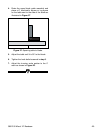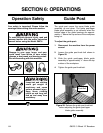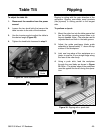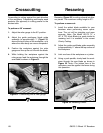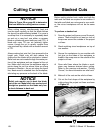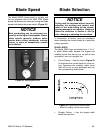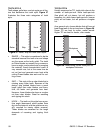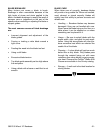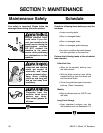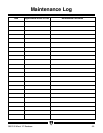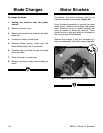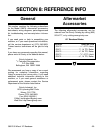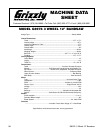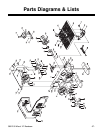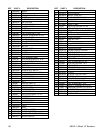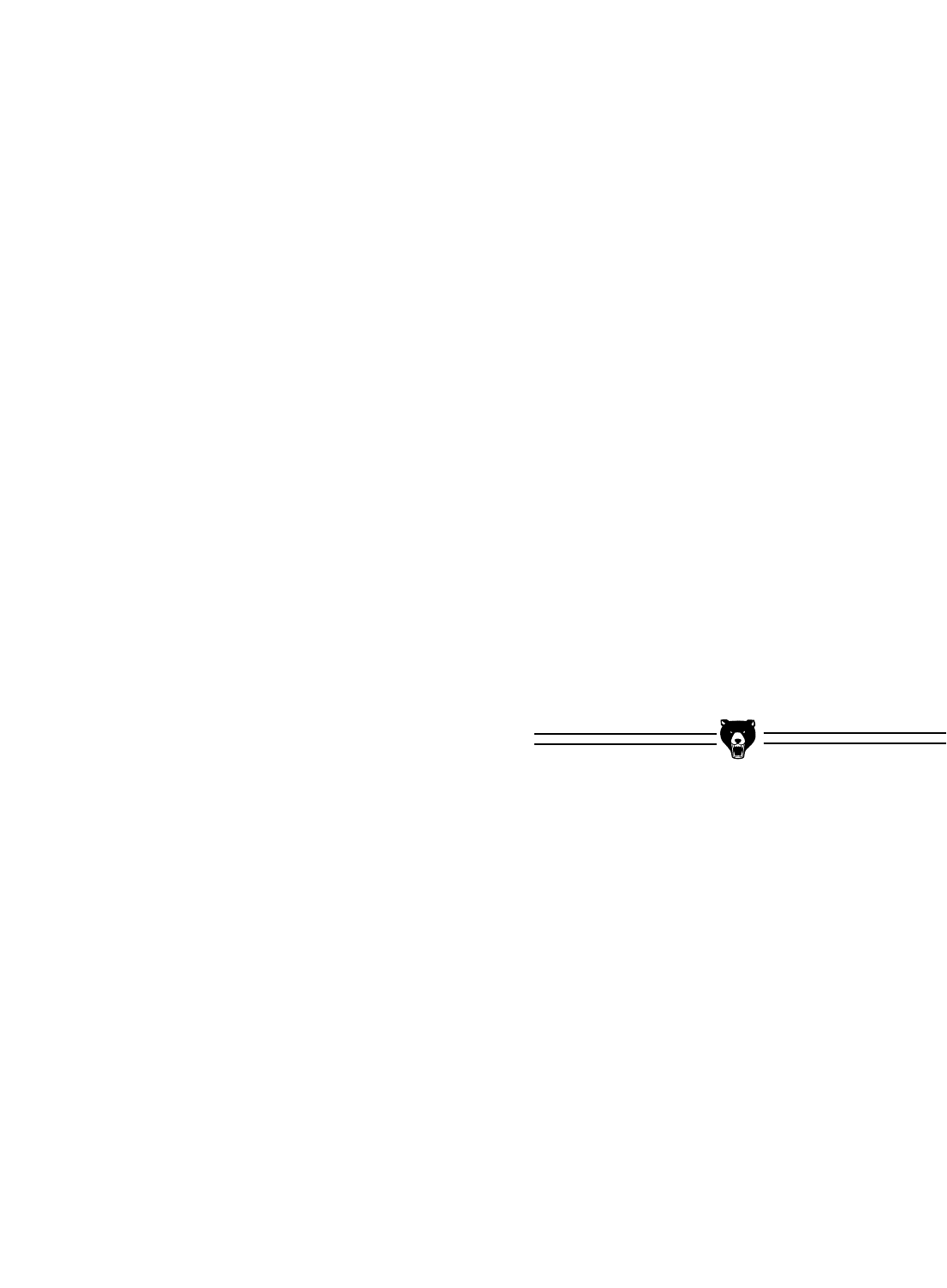
G8976 3 Wheel 12" Bandsaw -31-
BLADE BREAKAGE
Many factors can cause a blade to break.
Breakage is often unavoidable because of the
high levels of stress and strain applied to the
blade. Avoidable breakage is usually the result of
improper care or judgement on the part of the
operator when mounting or adjusting the blade or
support guides.
The most common causes of blade breakage
are:
• Incorrect alignment and adjustment of the
blade guides.
• Forcing or twisting a wide blade around a
tight curve.
• Feeding the wood into the blade too fast.
• Using a dull blade.
• Excessive blade tension.
• Top blade guide assembly set too high above
the workpiece.
• Using a blade with a braze or weld that is not
smooth.
BLADE CARE
When taken care of correctly, bandsaw blades
will provide a long usable life. When not handled,
used, cleaned, or stored correctly, blades will
quickly lose their ability to perform accurate and
reliable cuts.
• Handling — Bandsaw blades may become
damaged if they are not handled with care.
Never leave the blade laying on the floor or a
table where it can be stepped on or where
something can be placed on it.
• Usage — Be sure to select blades with the
proper width, style, and pitch for each appli-
cation. Using the wrong blade will often pro-
duce excessive heat which can shorten the
usable life of the blade.
• Cleaning — A clean blade will perform much
better than a dirty blade. Dirty blades pass
through the material being cut with more
resistance than clean blades, causing exces-
sive heat. Cleaners like OxiSolv
®
Blade & Bit
Cleaner are available in the Grizzly catalog.
• Storage — A wall rack is the ideal location for
storing blades.



